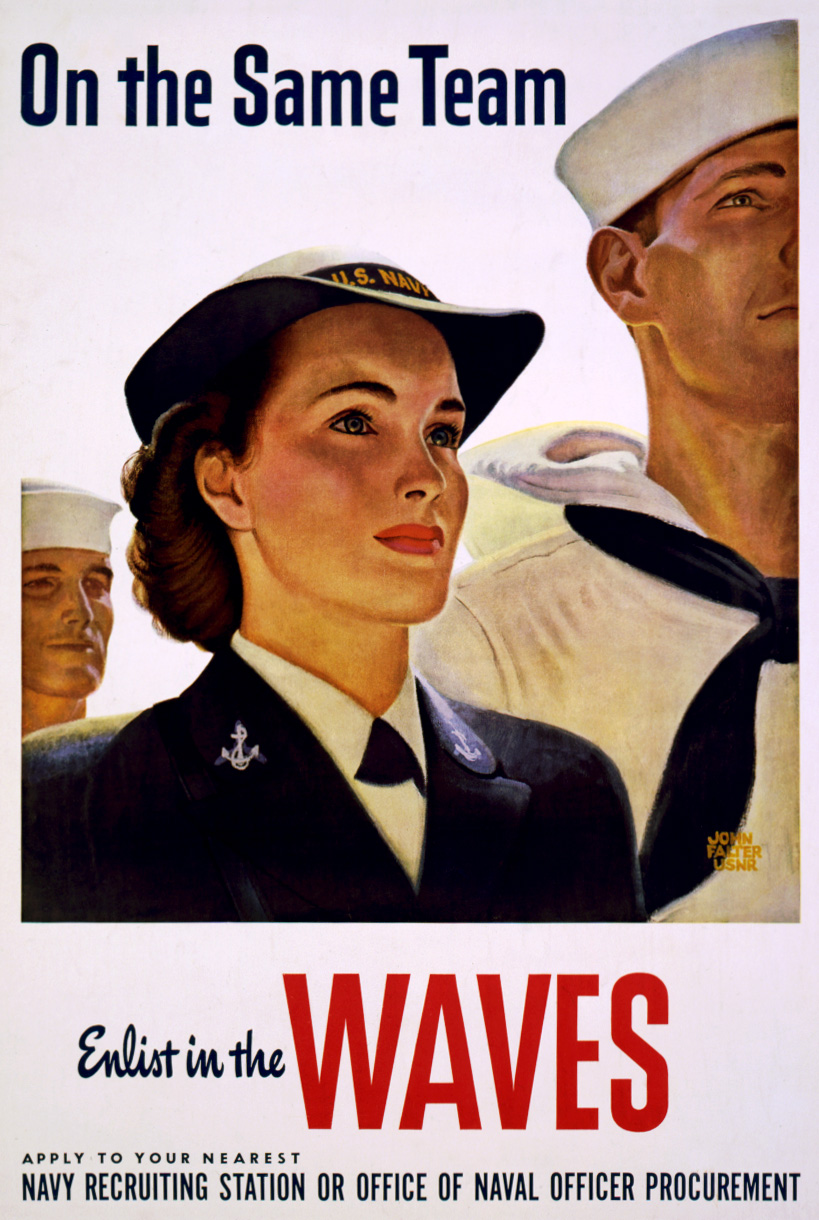In an era where most women worked in the home and took care of the children, war opened up many opportunities for women to work and serve their country. After 1914, these opportunities grew and became more diverse as it became more acceptable for women to work outside the home.
In World War I, many women joined organizations that educated people about the war and promoted nationalism. Some went overseas to help soldiers as YMCA members, while others remained home and took over jobs that had previously been filled by men, such as factory laborers. A number of young women were officially enlisted as Yeomen, but did not serve in battle.
They took over duties as clerks, radio and telegraph operators, and many other jobs that would keep them away from battle but also create good publicity and support. At the conclusion of WWI, most women quit their factory jobs so that the men returning home could get back to work.
By the end of World War I, 33,000 women had served as nurses and support staff in the military.
Before America entered World War II, the only jobs American women usually worked were as school teachers and nurses. Nurses working in the forces didn’t have ranks and weren’t considered as enlisted.
World War II saw women returning to factory work in even larger numbers than in WWI. Posters were made to help recruit women for factory work and the new branches in the military designed for women. The posters often showed hard-working women who wore makeup and still looked beautiful. Iconic images, such as “Rosie the Riveter”, assured women that they could remain feminine while doing the “tough” jobs of men: building ships, aircraft, vehicles, and munitions.
When World War II began it became evident that women were needed to help win this war. New branches in the military were opened up for the women to serve in, such as The WASPs, WAVES, SPARS, and WAC.
The WASPs (Women Airforce Service Pilots) flew newly built plains to other locations and tested them to see if they had any faults before being delivered to the Airforce.
The WAVES (Women Accepted for Volunteer Emergency Service) replaced many men on onshore establishments. They would operate radio towers and communications. Eleanor Roosevelt urged for the role of women in the Navy. Congress was slow to recognize the idea of women serving until 1942 when President Roosevelt recognized that women serving in the Navy would be a key to winning the war.
SPARs (The United States Coast Guard Women’s Reserve) served mainly in Alaska and Hawaii as communication operatives and recruiting for the Coast Guard.
The WAC (Women’s Army Corps) were trained to have high problem-solving abilities. They also did mechanic and communications work for the army. Over 150,000 American women served in the Women’s Army Corps during World War II.
Despite facing racism and sexism, many Japanese American women volunteered to serve in the Women’s Auxiliary Army Corps and were hired as interpreters, translators and interrogators for the Military Intelligence Service.
At the end of the war, many women chose to stay at their jobs.


